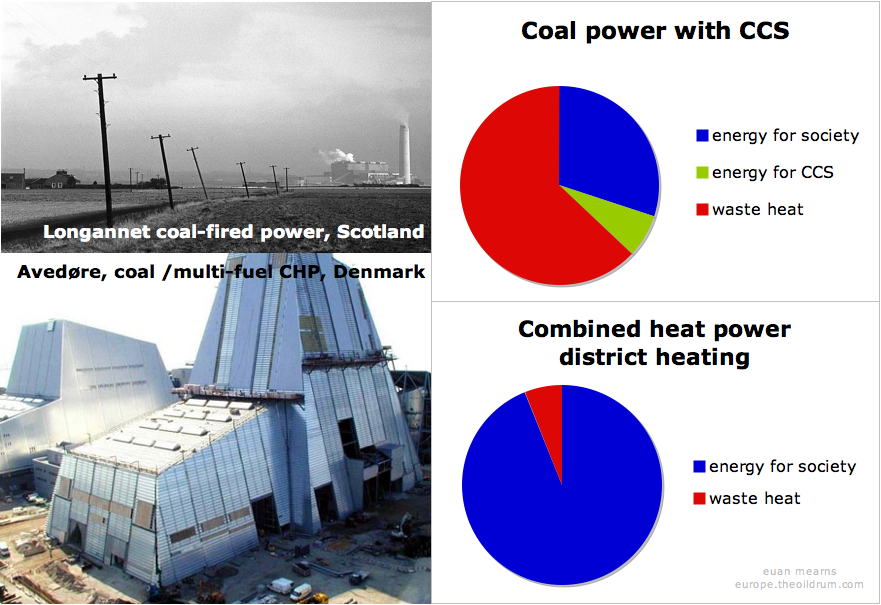From The Oil Drum:
Carbon capture and storage (CCS) involves removing carbon dioxide from the combustion stream of fossil fuel powered generating plant and sequestering it under ground in water-bearing geological strata. The objective is to reduce or eliminate CO2 emissions from electricity generation with focus on coal-fired plant.
CCS has three main elements:
- Capture of CO2 either pre- or post-combustion
- Transport to burial site, normally by pipeline
- Compression and burial in geological strata
The process involves large-scale engineering work, is expensive and uses a significant proportion of the power generated by the plant. The IPCC estimate that the energy cost is somewhere between 20 and 25%. In the UK the average efficiency of coal-fired plant is 37%, with 63% of the energy lost as waste heat. With CCS the energy efficiency drops to 30% assuming 20% of the power produced goes to bury CO2 rather than to power society.
An alternative to CCS is to burn less coal. Combined heat and power (CHP) generation involves capturing the waste heat from power stations and pumping this hot water to neighbouring houses in district heating systems. Danish CHP plant is over 90% energy efficient. Thus 3 times as much energy is extracted per unit of fossil fuel in CHP compared with normal plant fitted with CCS and this may equate to 67% reduction in coal use. Energy costs should therefore be reduced at national and individual level and CO2 emissions reduced by similar amount.
In Denmark, a certain CHP plant is also fitted with CCS. This is truly the belt and braces approach to environmental care. …




No comments:
Post a Comment